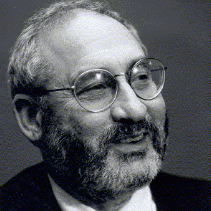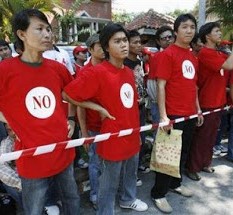-
Advocacy Theme
-
Tags
- Abortion
- Adoption
- Caregiving
- CEDAW
- Disability
- Domestic Violence
- Domestic Workers
- Harassment
- Healthcare
- Housing
- International/Regional Work
- Maintenance
- Media
- Migrant Spouses
- Migrant Workers
- Muslim Law
- National budget
- Parental Leave
- Parenthood
- Polygamy
- Population
- Race and religion
- Sexual Violence
- Sexuality Education
- Single Parents
- Social Support
- Sterilisation
- Women's Charter
How Stiglitz undermines Singapore’s struggles
March 27th, 2013 | News, Views
By Teo You Yenn
People who care about Singapore should reject this cheap thrill. Americans who care about reform in their case, on the other hand, should not be thrown off by the use of a case that is in fact closer to theirs than to genuinely desirable alternatives.
 Joseph Stiglitz’s commentary in The New York Times, “Singapore’s Lessons for an Unequal America” (March 18, 2013), promptly republished in The Straits Times, does great disservice to both Singaporeans and Americans.
Joseph Stiglitz’s commentary in The New York Times, “Singapore’s Lessons for an Unequal America” (March 18, 2013), promptly republished in The Straits Times, does great disservice to both Singaporeans and Americans.
Kirsten Han astutely points out in an article in Quartz, “Joseph Stiglitz’s Singapore is hardly the one I grew up in” (March 19, 2013), that Singapore’s Gini coefficient ranks among the highest among developed countries; that exploitable migrant labor has allowed employers to suppress wages; that workers’ rights to collective action are curtailed; and the “individual responsibility” to save, so lauded by Stiglitz, has led to tremendous burdens for Singaporeans.
In overlooking these basic empirical facts about the Singapore case, Stiglitz misrepresents the realities of inequality in Singapore and the profound costs it has entailed for social wellbeing.

More importantly, because he speaks from a position of great authority and legitimacy—a Nobel laureate economist—his misrepresentation undermines Singaporeans’ ongoing struggles for reform.
Inadvertently, Stiglitz’s willingness to gloss over the specificities and complexities of the case turns Singaporeans’ (not the Singaporean state’s) real and actual struggles for change into collateral damage. In making the claim that Singapore is a model for equality, he diminishes ongoing calls on the state to reform the welfare regime and address intensifying inequalities.
In praising, for example, the Central Provident Fund system for compelling individuals to save, Stiglitz affirms the Singapore state’s own claims that individuals should ultimately be responsible for themselves. As various members of civil society have pointed out in recent years, this individualized view of solutions leaves many needs unresolved and indeed generates significant inequalities across groups.
The healthcare system, heavily dependent as it is on individuals’ “responsibility” in ensuring lifelong employment and hence savings in their mandatory CPF accounts, disadvantages those who for various reasons are unable to have continuous and full employment. Because the CPF is tied to a given individual’s income, differentials in wages translate directly into unequal access.
At the Association of Women of Action and Research (AWARE), we have been particularly concerned with the ways in which women who do a great deal of unpaid domestic and care labor have greater difficulty accessing this basic need.
 In contemporary Singapore, various civil society groups, scholars, and individual citizens have been calling on the state to reform the welfare regime to ensure social inclusion and curb intensifying inequality. Like Stiglitz, we are interested in comparing cases and drawing comparative lessons. We have come to rather different conclusions about “the Singapore model.”
In contemporary Singapore, various civil society groups, scholars, and individual citizens have been calling on the state to reform the welfare regime to ensure social inclusion and curb intensifying inequality. Like Stiglitz, we are interested in comparing cases and drawing comparative lessons. We have come to rather different conclusions about “the Singapore model.”
Where Stiglitz places Singapore and the Nordic countries into the same category, we have pointed out the significant differences in both principles and outcomes. In support for children, for example, the Singapore model is strongly premised on women being responsible for decisions around fertility and children’s care, and men have limited rights to be caregivers.

In education, while it is true indeed, as Stiglitz points out, that Singaporean kids test well, this has come about at significant cost on the part of certain classes of parents; that enrichment and tuition centers are a thriving business signals the large private investments going into education.
In considering reform, Americans would be better served by looking closely at social policies in various Scandinavian countries that do genuinely generate greater equality—across class or gender—as various scholars do in books such as Gender Equality: Transforming Family Divisions of Labor (edited by Janet Gornick and Marcia Meyers).
From an outsider’s standpoint, the “Singapore as model” pitch is perhaps meant as praise. Given that Singaporeans often have to read about chewing gum and caning as if these alone define our nation, reading a positive piece in the New York Times about Singapore can evoke some nationalist feel-good sentiments (and no doubt readers noticed when Stiglitz praised his Singaporean students as some of his brightest).
Yet, the empirical failings of the piece are harmful. People who care about Singapore should reject this cheap thrill. Americans who care about reform in their case, on the other hand, should not be thrown off by the use of a case that is in fact closer to theirs than to genuinely desirable alternatives. Given ongoing debates, disagreements and struggles regarding the futures we want, and given the tensions in worldviews that exist between state and society and within society, the rush to declare Singapore as a coherent and stable model to be emulated undermines the very project to reform.
Teo You Yenn is a board member at AWARE, Assistant Professor in Sociology at the Nanyang Technological University, and author of the book Neoliberal Morality in Singapore: How family policies make state and society (Routledge, 2011). This article was first published in TODAY Voices on 27 March 2013. Read the published version here.



